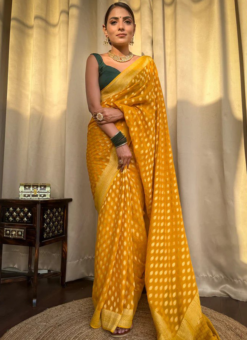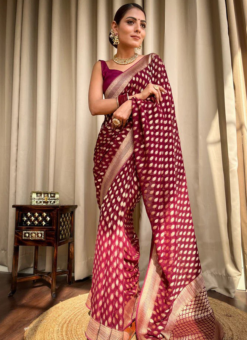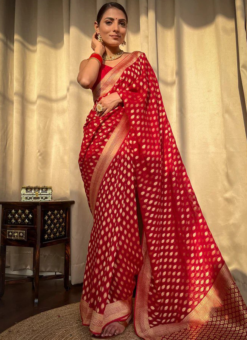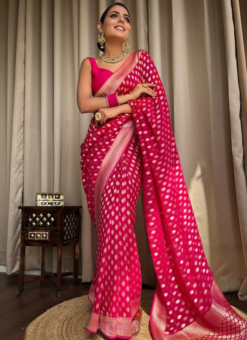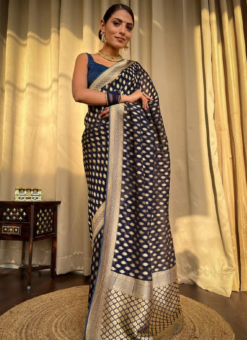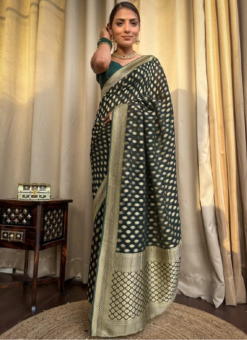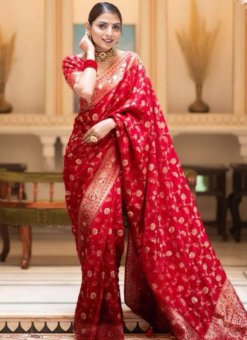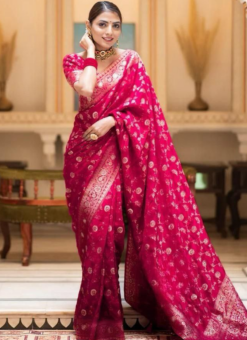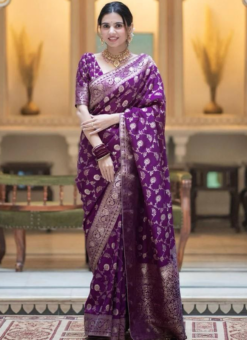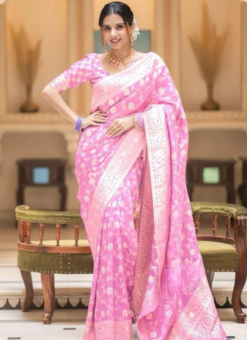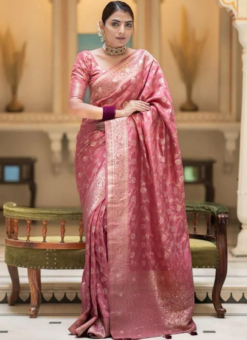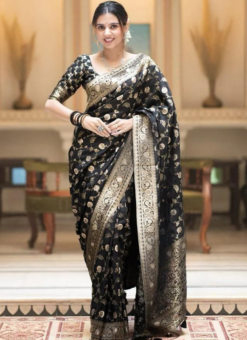$27
$27
$27
$27
$27
$27
$27
$27
$27
Bridal saree, sari or saree is a strip of unstitched cloth, worn by women, ranging from four to nine yards in length that is draped over the body in various styles which is native to the Indian Subcontinent. Saree is popular in India, Bangladesh, Pakistan, Nepal, Sri Lanka, Bhutan, Burma, Malaysia, and Singapore. The most common style is for the sari to be wrapped around the waist, with one end then draped over the shoulder, baring the midriff.
The sari is usually worn over a petticoat (called lahaṅgā or lehenga in the north; chaniyo, parkar, ghaghra, or ghagaro in the west; langa, pavada, or pavadai in the south; and shaya in eastern India), with a blouse known as a choli or ravika forming the upper garment. The blouse has short sleeves and a low neck and is usually cropped at the midriff, and as such is particularly well-suited for wear in the sultry South Asian summers. Cholis may be backless or of a halter neck style. These are usually more dressy, with plenty of embellishments such as mirrors or embroidery, and may be worn on special occasions. Women in the armed forces, when wearing a sari uniform, don a short-sleeved shirt tucked in at the waist. The sari developed as a garment of its own in both South and North India at around the same time, and is in popular culture an epitome of Indian culture. The sari signified the grace of Indian women adequately displaying the curves at the right places.

